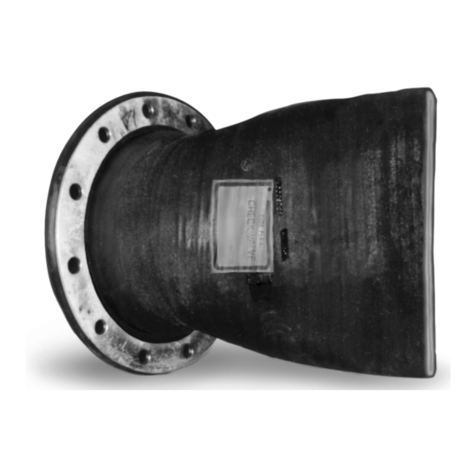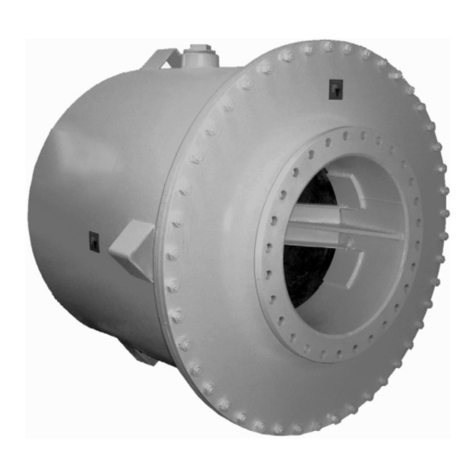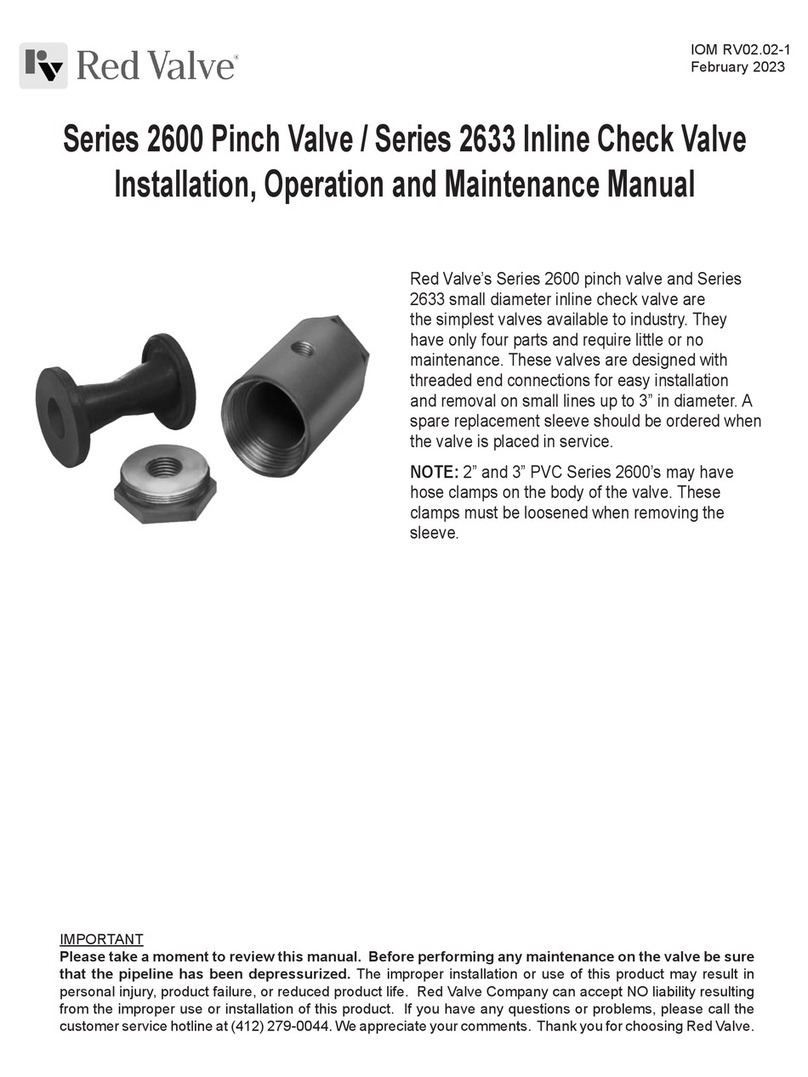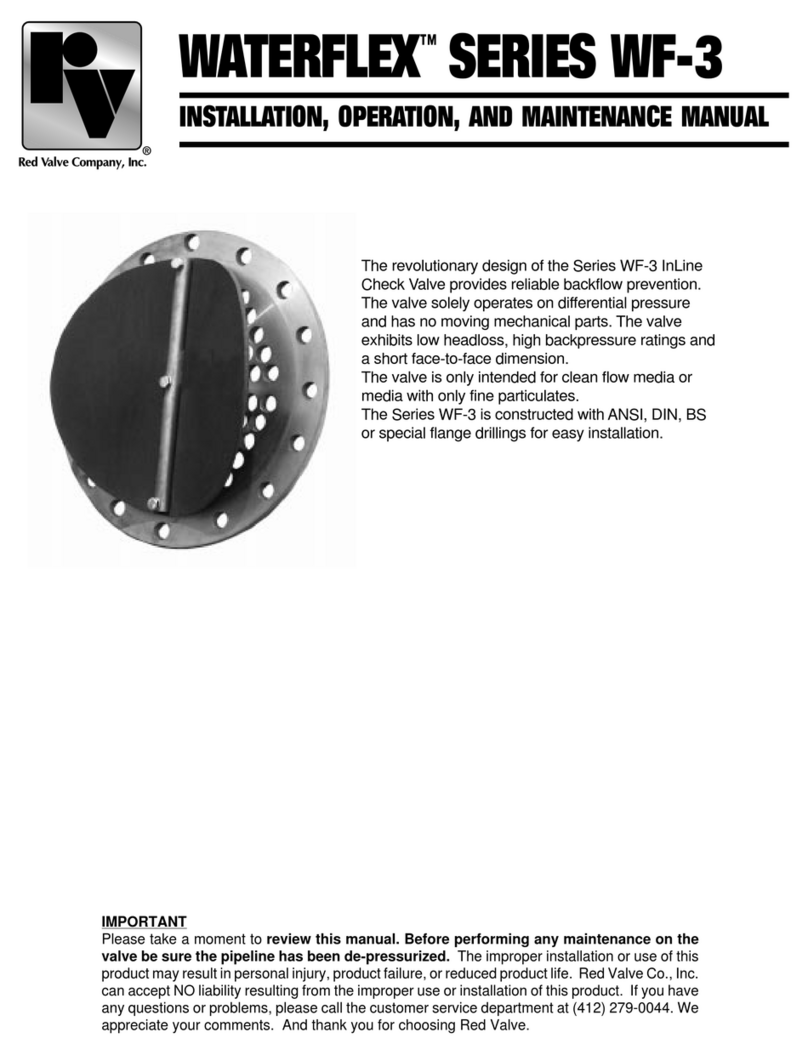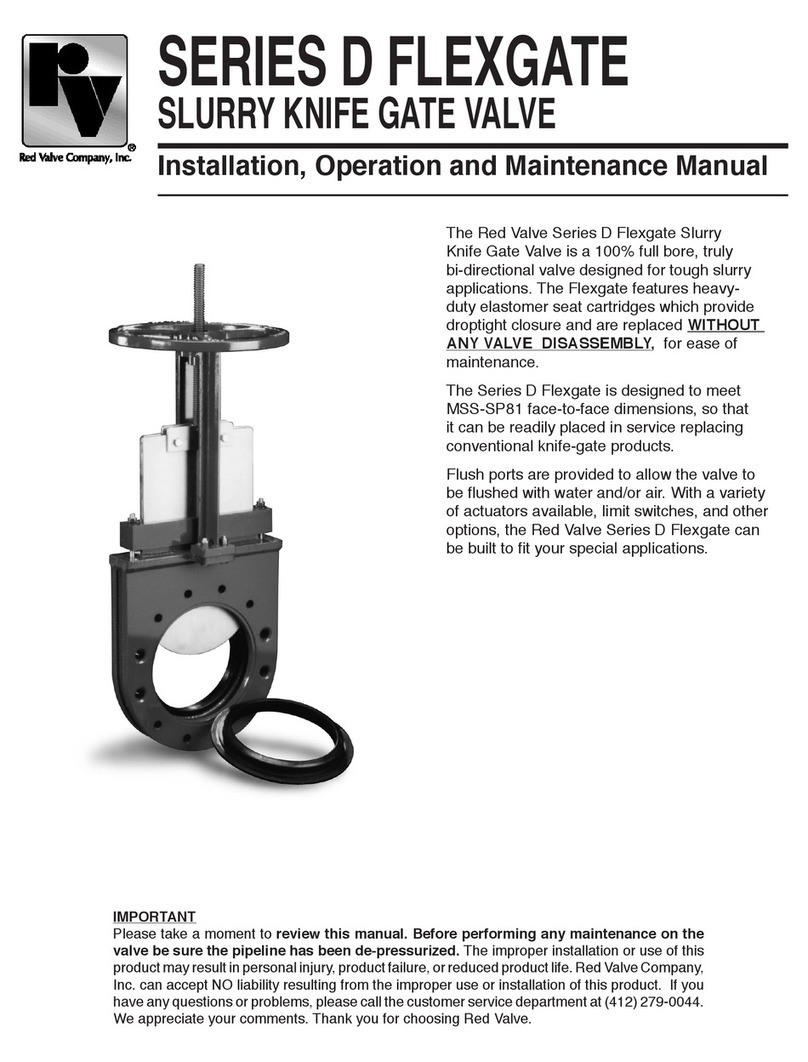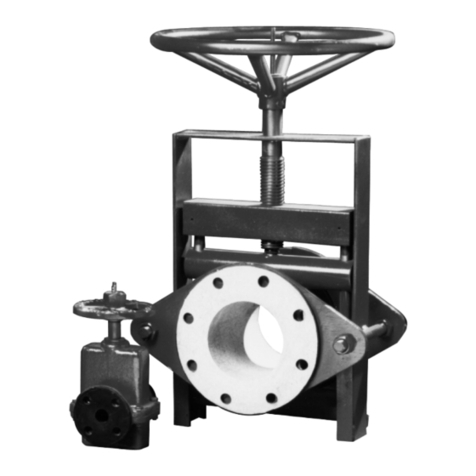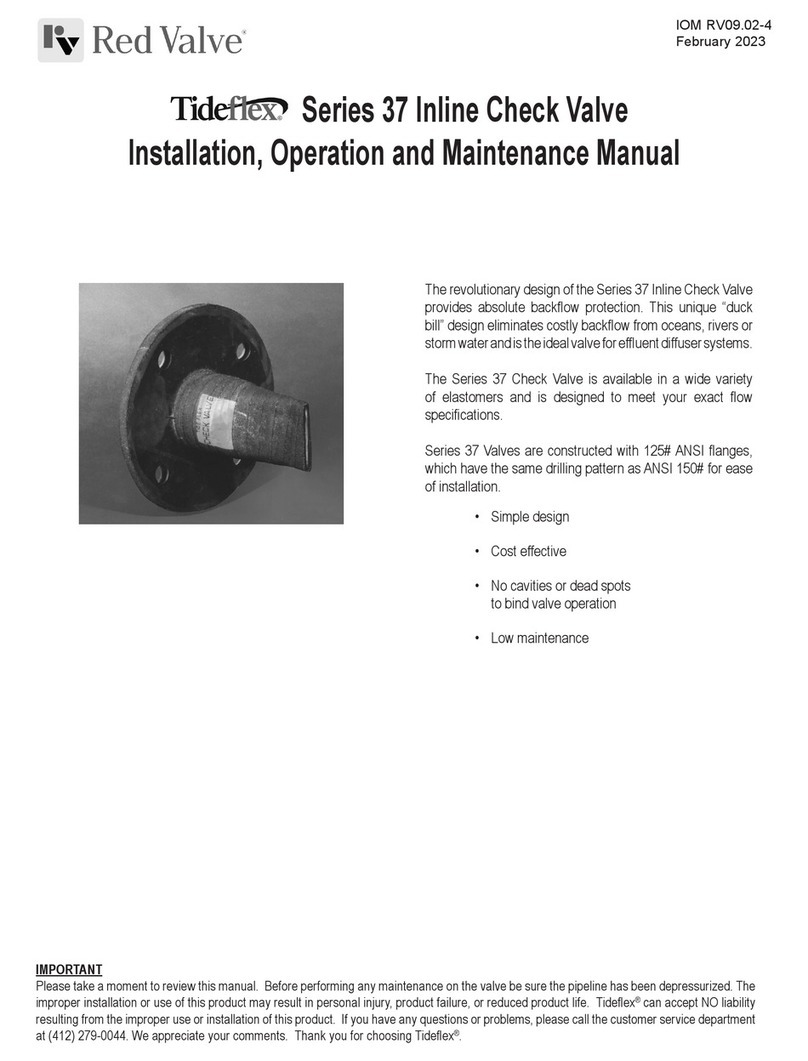
INSPECTION Valves should occasionally be inspected for damage and
wear. The inspection period should be determined by the severity of
the service and environment. If valves are periodically inspected and
preventative maintenance done, the valve will last longer and operate
better.
CAUTION: Do not remove any valve parts or bolting with pressure in
the valve. It is very easy to inspect the valve for obvious problems.
Several items should be checked, they are as follows: Check the stem
for wear and any damaged threads. If threads are damaged, use a small
file to remove the damaged portion of the thread. Check the stem and
stem bushing for small pieces of bronze which may have worn away. If
excess material is noticed the stem bushing should be removed and
inspected closer. If the stem or stem bushing is severely worn or
damaged, replace the damaged part. After the stem and stem bushing are
inspected, lubricate the entire stem and apply grease to the grease
nipple until clean grease begins to appear.
The next item to be inspected should be the exposed portion of the gate
when it is in the full open position. Check for scoring and excessive
wear. If the gate is excessively worn or scored, the valve should be
removed from the line and both the seat and entire gate inspected. If the
gate and seat show only slight damage, they may be repaired by using a
fine grinding wheel or fine sandpaper. If the gate is severely damaged it
should be replaced. If the metal seat is severely damaged the valve body
must be replaced. Severely damaged elastomer seats or seat rings may
be replaced.
Leakage through and gland packing can be easily checked. If the packing
is leaking, tighten the packing bolts. All packing bolts must be tightened
evenly. If this does not eliminate or reduce the leakage to a satisfactory
level, another ring of packing may be added, or the packing may be
replaced. If the outside of the valve is exposed to a corrosive
atmosphere or fluids, the flange bolting and cast iron body should be
checked for severe corrosion. CAUTION: Do not remove any valve
parts with pressure in the valve.
ADDITIONAL PACKING INSTALLATION
If the gate packing leaks and the leak can not be stopped by tightening
the packing bolts, check to see if the packing gland is bottomed out on
the body or the base of the yoke. If additional packing needs to be
added, follow the instructions below.
1. Be sure that there is no pressure in the valve.
2. Open the valve. For large cylinder sizes, open pressure may have to
be maintained. For valves with a fail close cylinder, open pressure must
be maintained on the cylinder.
3. Remove the bolts from the packing stuffer. Lift the packing stuffer,
exposing the upper layer of packing.
4. Insert one ring of packing around the gate. Packing should be scarf cut
(on a 450 angle). If packing is cut straight across, be sure that the ends
of the packing butt together and do not overlap.
5. Tamp the packing down with a wood, plastic or brass rod, be sure
that the packing contacts the gate and wall of the gland all the way
around.
6. Lower the packing stuffer and partially tighten the bolts. Tighten the
bolts evenly.
7. Operate the valve open and close several times to break in the
packing. Fully tighten the packing bolts.
PACKING REPLACEMENT
1. Be sure that there is no pressure in the valve.
2. Close the valve. Disconnect the stem from the gate by removing the
pin or bolts from the gate.
3. Raise the stem or piston rod. Open pressure must be maintained on
fail close cylinders.
4. Remove the bolts from the packing stuffer. Remove the packing
stuffer. Remove the old packing. NOTE: Be very careful not to damage
the gate or lining.
5. Insert one ring of packing around the gate. Packing should be scarf cut
(on a 45 degree angle), to make the packing seal better. Great care must
be taken to make sure that the gate is flush against the seat. NOTE: If
the packing is cut straight across, be sure that the ends of the packing
butt together and do not overlap. Alternate the cut ends of the packing.
6. Tamp the packing to the bottom of the gland. Use a wood, plastic or
brass rod and be sure not to scratch the gate or wall of the gland.
NOTE: Be sure that the gate is against the seat, and that packing
contacts wall of the gland and the gate all the way around.
7. Repeat steps 5 and 6 with another strip of packing. The end joints of
the packing should be alternated to reduce the possibility of leakage.
8. Install the rubber secondary seal and push it to the bottom of the
gland.
9. Repeat steps 5 and 6 with the third and final layer of packing.
10. Install the packing stuffer and tighten the bolts evenly. The bolts
should not be completely tightened. Reconnect the gate to the actuator.
11. Operate the valve several times to break in the packing. Be sure that
the gate is against the seat. Fully tighten the packing bolts.
MAINTENANCE
